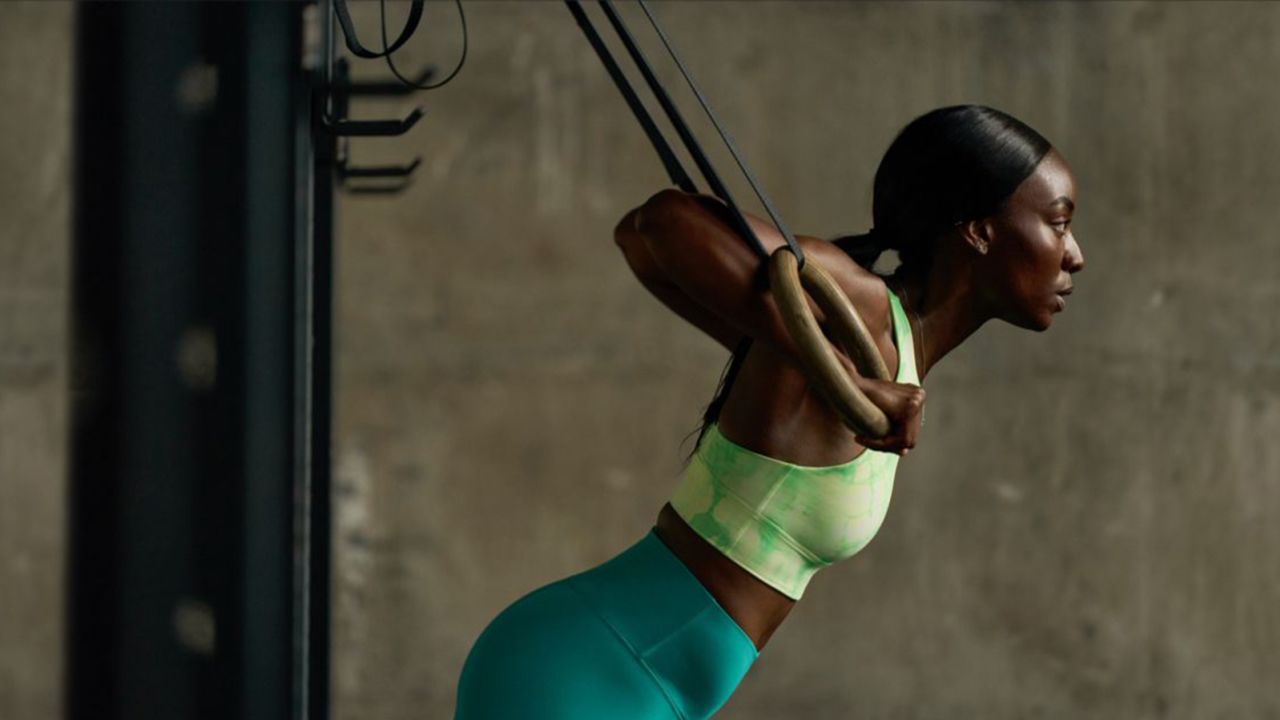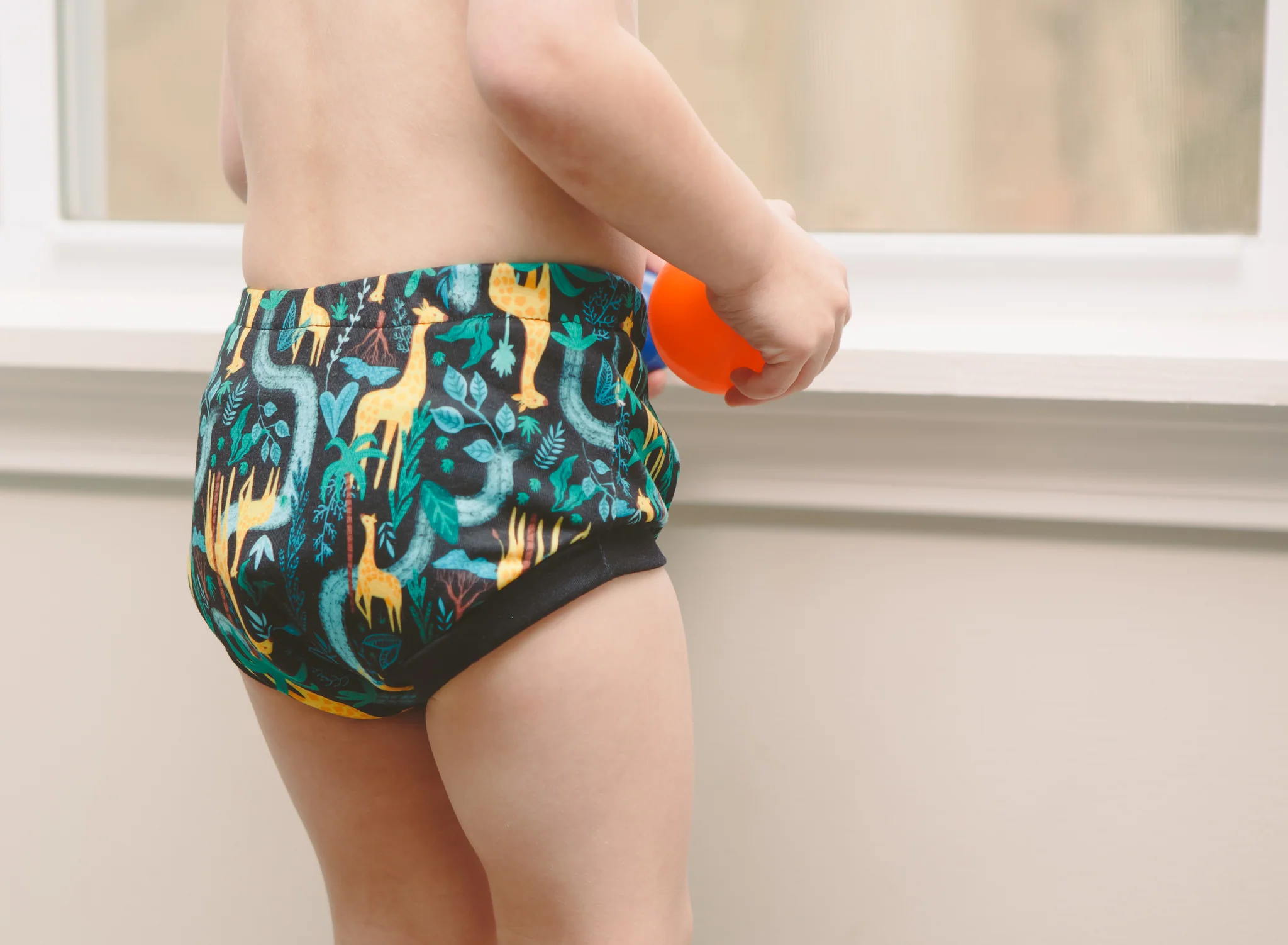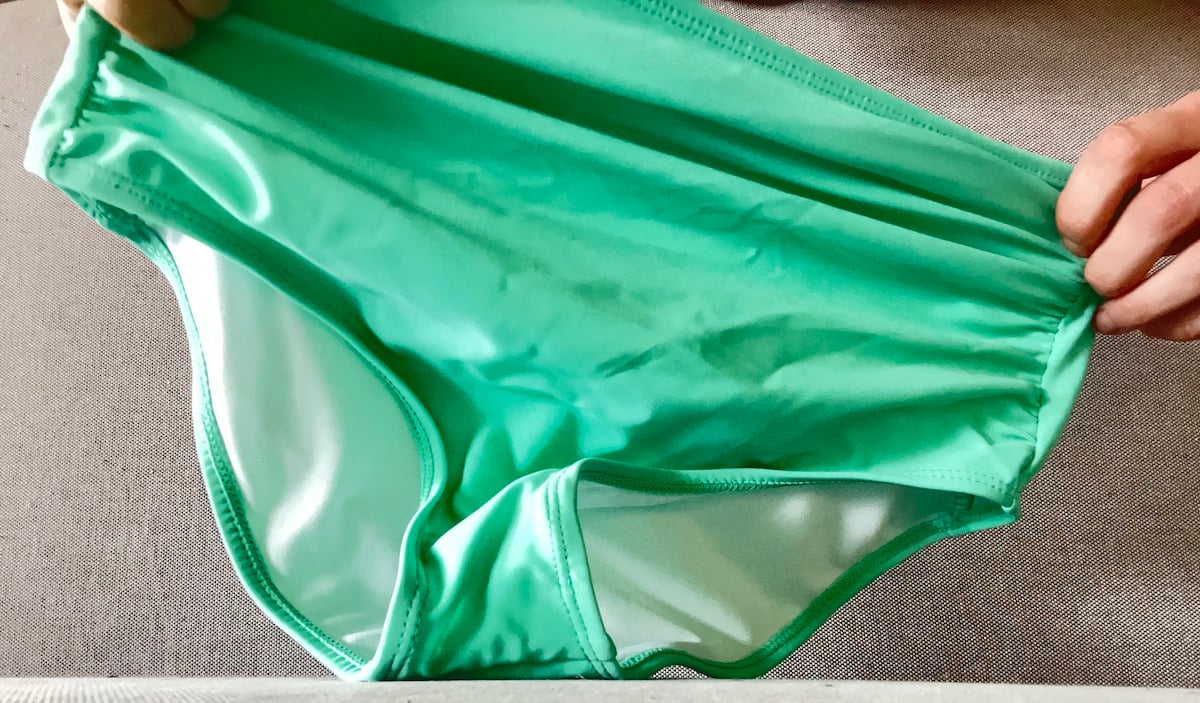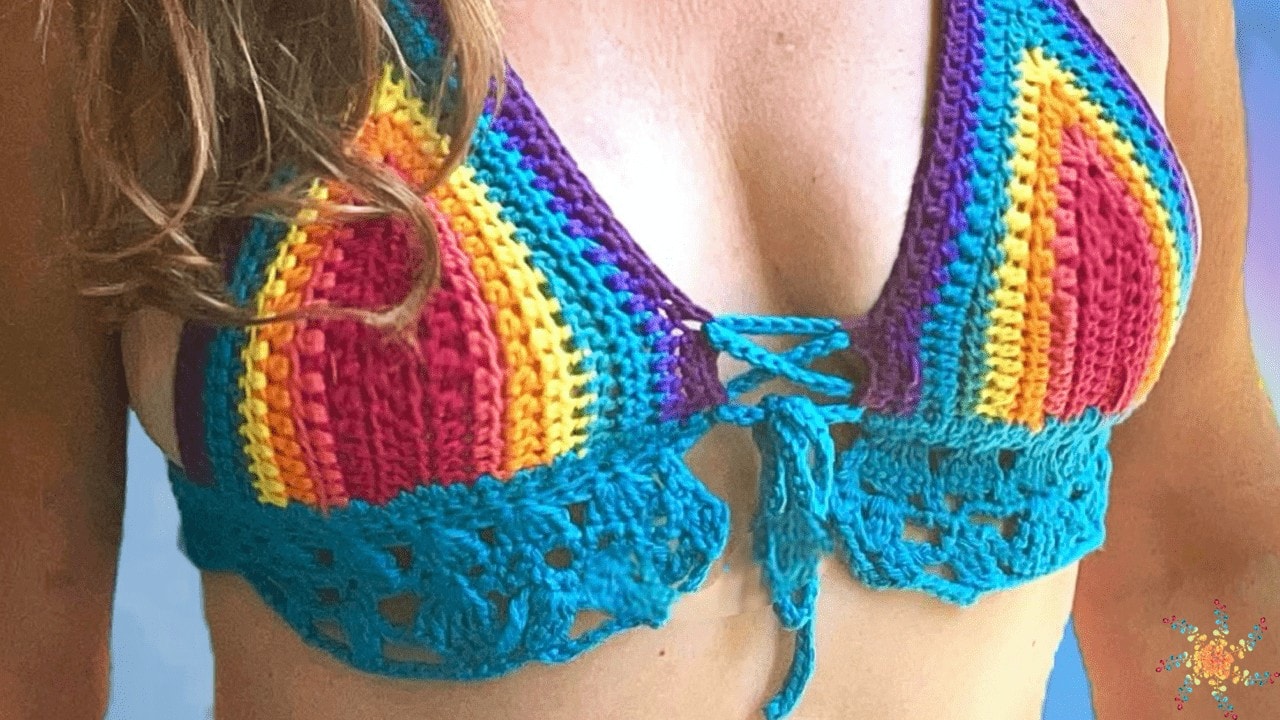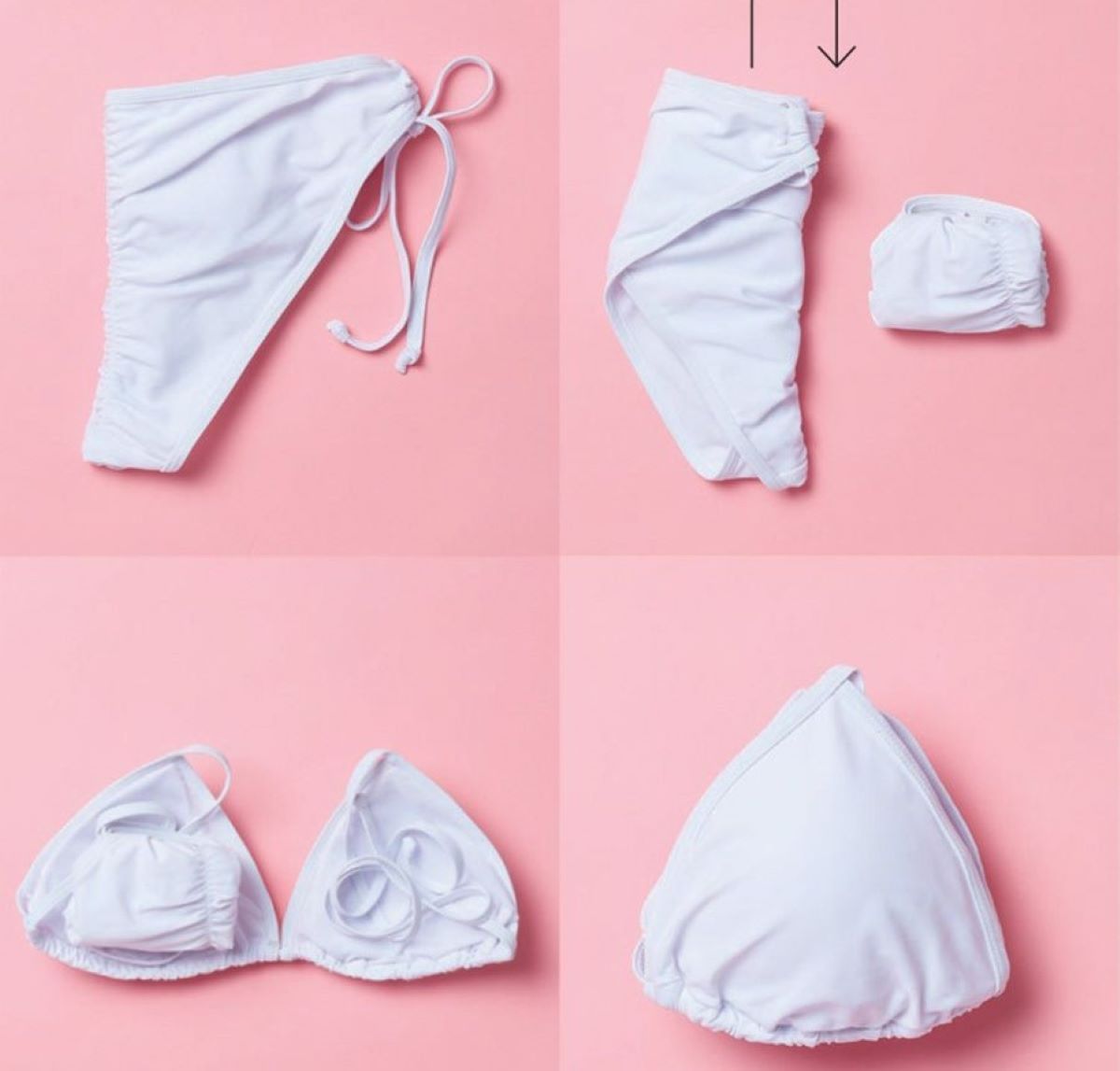Home>How-to Guides>For Women>How To Train For Bikini Competition


For Women
How To Train For Bikini Competition
Published: July 31, 2023
Discover effective training strategies specifically designed for women looking to compete in bikini competitions and achieve their fitness goals.
(Many of the links in this article redirect to a specific reviewed product. Your purchase of these products through affiliate links helps to generate commission for Under-tec.com, at no extra cost. Learn more)
Table of Contents
Introduction
Welcome to the exciting world of bikini competition training! If you’re looking to take your fitness journey to the next level and showcase your hard work on stage, then you’ve come to the right place. Bikini competitions have gained immense popularity among women who are passionate about fitness and bodybuilding.
Competing in a bikini competition goes beyond just looking good in a swimsuit. It requires dedication, discipline, and a well-structured training plan to help you achieve your desired physique. Whether you’re a seasoned athlete or completely new to the competition scene, this comprehensive guide will walk you through the essential steps to train for a bikini competition and succeed on stage.
Before diving into the nitty-gritty of training, it’s important to understand the purpose and requirements of bikini competitions. These competitions focus on promoting a fit and healthy physique while maintaining femininity and grace. Judges will assess your overall appearance, including muscle tone, symmetry, stage presence, and confidence.
Training for a bikini competition is not only about transforming your body; it’s also an opportunity for personal growth and self-discovery. It requires mental fortitude, perseverance, and a positive mindset. So, before embarking on this journey, make sure you’re ready to commit to the process both physically and mentally.
This guide will walk you through the key elements of bikini competition training, including setting goals, creating a training plan, resistance training, cardiovascular training, nutrition and dieting, supplementation, posing and presentation, mental preparation, and rest and recovery. By the end, you’ll be equipped with the knowledge and tools to start your bikini competition journey on the right track.
Remember, the road to the stage may be challenging, but it’s also incredibly rewarding. So, let’s get started and learn how to train for a bikini competition!
Setting Goals
Before you can embark on your bikini competition training journey, it’s vital to set clear and realistic goals. Setting goals provides you with direction, motivation, and a sense of purpose throughout your training. It helps you stay focused and determined even when faced with obstacles.
When setting your goals, it’s important to consider both your short-term and long-term objectives. Short-term goals could include losing a certain percentage of body fat, gaining a specific amount of muscle mass, or improving your strength and endurance. Long-term goals may involve competing in a specific bikini competition, placing in the top three, or earning your pro card.
Your goals should be measurable, attainable, relevant, and time-bound (SMART). This ensures that they are specific enough to track progress, realistic enough to achieve, aligned with your overall vision, and bound to a timeline. Breaking down your long-term goals into smaller, manageable milestones can also make the process more manageable and less overwhelming.
While setting goals, it’s important to consider your individual body type, genetics, and previous training experience. Understand that everyone’s journey is unique, and progress may vary from person to person. Avoid comparing yourself to others and instead focus on self-improvement and celebrating your personal achievements.
It’s also crucial to keep your goals flexible and adaptable. As you progress through your training, you may encounter unexpected challenges or barriers. Being open to adjusting your goals based on your evolving needs and circumstances will help you stay motivated and maintain a positive mindset.
Once you’ve defined your goals, write them down and keep them in a visible place as a constant reminder of what you’re working towards. Visualize yourself achieving these goals and the satisfaction and pride that comes with it. This mental imagery can be a powerful motivator during challenging times.
Remember, goal setting is not just about the end result, but also about the process and the growth you experience along the way. Embrace the journey and celebrate each milestone as you progress towards your ultimate goal of stepping on stage with confidence and grace.
Creating a Training Plan
When it comes to preparing for a bikini competition, having a well-structured training plan is essential. A training plan will guide you through your workouts, ensuring that you’re targeting the right muscles and making progress towards your goals. Here’s how to create an effective training plan:
1. Assess Your Current Fitness Level: Begin by assessing your current fitness level, including your strength, flexibility, and cardiovascular endurance. This will help you determine where you need to focus your efforts and set a baseline for tracking progress.
2. Determine Training Frequency: Decide how many days per week you can commit to training. Aim for a minimum of three to four days to allow for adequate rest and recovery.
3. Select the Right Exercises: Choose exercises that target the major muscle groups and help you achieve your desired physique. Include a mix of compound movements (exercises that work multiple muscle groups) and isolation exercises (exercises that target specific muscles).
4. Assign Training Splits: Divide your training days into specific muscle groups or movement patterns. Common training splits for bikini competition training include upper body, lower body, push-pull, or full body workouts. Rotate your training splits to ensure balanced development.
5. Set Repetition Ranges and Intensity: Determine the number of repetitions (reps) and sets you will perform for each exercise. For muscle building, aim for 8-12 reps per set. Increase the weight as you progress to maintain the challenge.
6. Incorporate Progressive Overload: Gradually increase the weight, reps, or intensity of your workouts over time. Progressive overload is crucial for continual muscle development and strength gains.
7. Allow for Rest Days: Rest days are just as important as training days. It’s during rest that your muscles recover and grow. Aim for at least one or two rest days per week to prevent overtraining and injuries.
8. Include Cardiovascular Training: Cardiovascular exercise helps improve your cardiovascular health, burn calories, and support fat loss. Incorporate cardio sessions into your training plan, aiming for 150 minutes of moderate-intensity cardio per week.
9. Plan for Flexibility and Mobility: Don’t neglect flexibility and mobility work. Include stretching exercises, yoga, or mobility drills to improve flexibility, joint stability, and overall movement quality.
10. Evaluate and Adjust: Regularly assess your progress and make adjustments to your training plan as needed. Listen to your body, address any weaknesses or imbalances, and experiment with different training techniques.
Remember, consistency and adherence are key when it comes to training. Stick to your plan, stay motivated, and enjoy the process. The hard work you put in will pay off when you step on stage with confidence and showcase your incredible physique!
Resistance Training
Resistance training is a crucial component of bikini competition training as it helps build lean muscle mass, improve muscle tone, and sculpt your physique. Here’s what you need to know about incorporating resistance training into your workout routine:
1. Choose the Right Exercises: Focus on compound exercises that target multiple muscle groups, such as squats, deadlifts, bench presses, lunges, and rows. These exercises engage more muscles and allow you to lift heavier weights, promoting overall muscle development.
2. Train with Proper Form: Pay attention to your form and technique during resistance training. Using correct form minimizes the risk of injury and ensures that you’re effectively targeting the intended muscle groups. Consider working with a qualified trainer if you’re new to weightlifting.
3. Vary the Rep Range: Incorporate a mix of different repetition ranges in your resistance training. Aim for 8-12 reps per set for muscle building, 12-15 reps for muscle endurance, and 4-6 reps for strength development. Varying the rep ranges challenges your muscles in different ways, promoting overall growth.
4. Gradually Increase Weight: As your strength improves, gradually increase the weight you’re lifting. Progressive overload is essential for continual muscle development. However, always prioritize proper form and technique over lifting heavy weights.
5. Include Supersets and Circuits: To maximize your workout efficiency, incorporate supersets and circuits. Supersets involve performing two exercises back-to-back with minimal rest in between, targeting different muscle groups. Circuits involve performing multiple exercises in succession, targeting the same muscle group. These techniques increase the intensity and calorie burn of your workouts.
6. Rest and Recovery: Allow for adequate rest between sets and exercises. Rest periods vary depending on your training goals. For muscle building, aim for 60-90 seconds of rest between sets. For strength development, allow for 2-3 minutes of rest. Listen to your body’s cues and adjust rest times as needed.
7. Incorporate Progressive Overload: Continually challenge your muscles by increasing the weight, repetitions, or intensity of your workouts over time. This progressive overload stimulates muscle growth and prevents plateaus.
8. Train all Muscle Groups: Ensure you’re targeting all major muscle groups, including the legs, glutes, core, back, chest, shoulders, and arms. Developing balanced muscle symmetry is important for an aesthetically pleasing physique.
9. Periodize Your Training: Consider implementing a periodized training program. This involves dividing your training into specific phases, each with a different focus and intensity level. Periodization helps prevent burnout, avoids plateaus, and allows for continuous progress.
10. Listen to Your Body: Pay attention to your body’s signals and adjust your training accordingly. Allow for adequate rest and recovery between sessions, modify exercises if necessary, and prioritize injury prevention. Take care of your body and make your training sustainable for the long term.
Remember, resistance training is not just about building muscle but also about improving your overall strength, posture, and confidence. Stay consistent, challenge yourself, and celebrate your progress along the way!
Cardiovascular Training
Cardiovascular training is an essential component of a well-rounded bikini competition training program. It helps improve your cardiovascular health, increase calorie burn, and support fat loss. Here’s what you need to know about incorporating cardiovascular training into your workout routine:
1. Choose the Right Cardio Exercises: Select cardio exercises that you enjoy and that can be sustained for a longer duration. Options include running, cycling, swimming, rowing, dancing, or using cardio machines like the treadmill or elliptical.
2. Set Realistic Time Goals: Aim for a minimum of 150 minutes of moderate-intensity cardio per week, as recommended by the American Heart Association. Break it down into manageable sessions of 30 minutes, five days a week, or adjust the duration based on your fitness level and schedule.
3. Mix Intensity Levels: Incorporate a mix of low, moderate, and high-intensity cardio sessions. Low-intensity cardio, such as walking or light jogging, can be done on your active recovery days. Moderate-intensity cardio should challenge your heart rate and breathing, while high-intensity intervals, like sprints or HIIT, can help boost calorie burn and improve cardiovascular fitness.
4. Utilize HIIT (High-Intensity Interval Training): HIIT involves alternating between short bursts of high-intensity activity and periods of active recovery. This type of cardio training can help improve aerobic capacity, increase fat burning, and save time by providing an efficient workout in a shorter duration.
5. Incorporate LISS (Low-Intensity Steady State): LISS cardio involves performing cardio exercises at a steady, moderate intensity for an extended period, usually 30-60 minutes. This type of cardio is ideal for active recovery, improving endurance, and burning calories.
6. Include Varied Cardio Modalities: Mix up your cardio routine to keep it interesting and prevent boredom. Try different activities like swimming, kickboxing, hiking, or group fitness classes. Variety challenges your body in new ways and can help prevent plateaus.
7. Monitor your Heart Rate: Use a heart rate monitor to track your heart rate during cardio sessions. This can help you stay within the desired intensity zones for optimal fat burning or cardiovascular conditioning.
8. Warm-up and Cool Down: Prioritize a proper warm-up before starting your cardio session to prepare your muscles and prevent injuries. Similarly, finish your workout with a cool down to slowly bring down your heart rate and help with recovery.
9. Combine Cardio with Resistance Training: Consider implementing cardio sessions on separate days from your resistance training to ensure proper recovery for each. Alternatively, you can incorporate shorter cardio sessions as a warm-up or cool-down before or after your resistance training workouts.
10. Listen to Your Body: Pay attention to your body’s signals during cardio training. Adjust the intensity, duration, or type of cardio exercise if needed. If you experience any pain or discomfort, consult a healthcare professional.
Remember, cardiovascular training should complement your overall bikini competition training plan. It plays a significant role in improving your endurance, burning calories, and showcasing your hard-earned physique on stage. Find the cardio activities that you enjoy and make it a regular part of your fitness regimen!
Nutrition and Dieting
Nutrition and dieting play a crucial role in bikini competition training. Proper nutrition provides the fuel your body needs to perform at its best, supports muscle growth and recovery, and helps you achieve the desired physique. Here are some key guidelines to follow for optimal nutrition during your training:
1. Calculate Your Caloric Needs: Determine your daily caloric needs based on your goals, body composition, and activity level. This can be done using online calculators or by working with a registered dietitian or nutritionist.
2. Focus on Macronutrients: Ensure your diet includes an appropriate balance of macronutrients – carbohydrates, proteins, and fats. Carbohydrates provide energy, proteins support muscle repair and growth, and fats aid hormone production and overall health.
3. Prioritize Lean Protein: Include lean sources of protein in each meal, such as chicken breast, turkey, fish, lean cuts of beef, eggs, and plant-based sources like tofu or tempeh. Protein is essential for muscle development and repair.
4. Choose Healthy Carbohydrates: Opt for complex carbohydrates such as whole grains, brown rice, quinoa, sweet potatoes, fruits, and vegetables. These provide a steady release of energy, fiber, and essential nutrients.
5. Incorporate Essential Fats: Include sources of healthy fats in your diet, such as avocados, nuts, seeds, olive oil, and fatty fish like salmon. These fats support hormone production, brain function, and overall health.
6. Hydrate Well: Stay adequately hydrated by drinking plenty of water throughout the day. Aim for at least 8-10 glasses of water daily, or more if you’re engaging in intense physical activity.
7. Practice Portion Control: Be mindful of portion sizes to ensure you’re consuming an appropriate amount of calories for your goals. Use measuring cups, a food scale, or the palm method to estimate portion sizes.
8. Eat Balanced Meals: Construct meals that contain a balance of protein, carbohydrates, and fats. Include a variety of nutrient-dense foods to ensure you’re getting all the essential vitamins, minerals, and antioxidants your body needs.
9. Time Your Meals: Aim to eat every 3-4 hours to keep your energy levels stable and support muscle recovery. Pre- and post-workout meals or snacks should be strategically timed to provide the necessary nutrients for optimal performance and recovery.
10. Allow for Flexibility: While it’s important to follow a nutritious diet, allowing for some flexibility and enjoyment is key to maintaining a healthy relationship with food. Include occasional treats or meals that you truly enjoy, and remember that balance is key.
Remember, everyone’s nutritional needs may vary based on individual factors and goals. It’s always recommended to consult with a registered dietitian or nutritionist who can provide personalized guidance and support throughout your bikini competition training journey.
Supplementation
Supplementation can be a valuable addition to your bikini competition training regimen, assisting you in meeting your nutritional needs, supporting your performance, and optimizing your overall health. Here are some key points to consider when it comes to supplements:
1. Fill Nutritional Gaps: Supplements can help fill any potential nutritional gaps in your diet. While a balanced diet should be the foundation of your nutrition, certain supplements can provide additional vitamins, minerals, or phytonutrients that may be lacking.
2. Consult with a Professional: It’s important to consult with a healthcare provider or registered dietitian before starting any supplementation regimen. They can evaluate your individual needs, goals, and potential interactions with medications or existing health conditions.
3. Essential Supplements: Some essential supplements commonly used by bikini competitors include a high-quality multivitamin, omega-3 fatty acids (fish oil or algae oil), and vitamin D. These supplements provide a range of benefits, including supporting overall health and optimizing nutrient absorption.
4. Protein Powders and BCAAs: Protein powders, such as whey or plant-based options, can be convenient for meeting your daily protein needs. Branched-chain amino acids (BCAAs) are also popular among athletes to support muscle recovery and reduce muscle soreness.
5. Pre-Workout Supplements: Pre-workout supplements can provide an extra energy boost and improve focus during intense workouts. Look for well-researched ingredients like caffeine, beta-alanine, and citrulline malate in safe dosages.
6. Post-Workout Recovery: Consuming a post-workout protein shake or supplement enriched with carbohydrates can help replenish glycogen stores and support muscle recovery. Look for products with a 2:1 ratio of carbohydrates to protein for optimal recovery.
7. Performance Enhancers: Some athletes may consider performance-enhancing supplements like creatine or beta-alanine. These supplements have been shown to improve strength, power, and endurance, but it’s crucial to research and discuss with a professional before use.
8. Timing and Dosage: Pay attention to timing and dosage guidelines for supplements. Some supplements are best taken pre-workout, post-workout, or with meals. Always follow the recommended dosage instructions on the product’s label.
9. Quality and Safety: Ensure that the supplements you choose are from reputable brands and have undergone third-party testing for quality and purity. Look for certifications like NSF International or USP to ensure safety and quality standards.
10. Long-Term Strategy: Remember, supplements should complement, not replace, a well-balanced diet. They should be seen as an addition to an overall healthy lifestyle and should not be relied upon solely for results. Prioritize wholesome, nutrient-dense foods as the foundation of your nutrition.
Supplementation can be a personal choice based on individual needs and goals. What works for one person may not work for another. It’s important to focus on a balanced approach, prioritize sound dietary strategies, and make informed decisions when incorporating supplements into your bikini competition training plan.
Posing and Presentation
Posing and presentation are crucial aspects of a successful bikini competition. It’s not just about having a great physique; it’s about showcasing it with confidence, grace, and poise on stage. Here’s what you need to know about posing and presentation:
1. Research and Study Poses: Study various posing techniques and styles specific to bikini competitions. Look for resources such as online tutorials, videos, or even hiring a posing coach. Familiarize yourself with the mandatory poses, quarter turns, and ways to highlight your physique’s best aspects.
2. Practice Regularly: Posing is an art that requires practice. Set aside time every day or week to practice your poses. Practice in front of a mirror or record yourself to evaluate your posture, angles, and overall presentation. Take note of any areas that need improvement and work on perfecting your posing style.
3. Develop Stage Presence: Work on developing your stage presence by practicing good posture, walking confidently, and projecting positive energy. Your stage presence should exude confidence, elegance, and a genuine connection with the audience and judges.
4. Showcase Your Body’s Best Features: Posing is about highlighting your physique’s strengths. Understand your body’s best features and angles, and emphasize them during your poses. This will draw attention to your desired areas and create a visually appealing presentation.
5. Facial Expressions: Smile and maintain a pleasant facial expression throughout your posing routine. Your facial expressions should match the energy and confidence you’re portraying with your body. Practice in front of a mirror to ensure a natural and confident smile.
6. Understand Transitions: Smooth transitions between poses are important for maintaining a seamless and polished presentation. Practice moving from one pose to another with grace and fluidity. Use transitions to accentuate your body’s lines and create a visually appealing flow.
7. Seek Feedback: Seek feedback from others, such as posing coaches, fellow competitors, or trusted friends and family. They can provide valuable insights and help identify areas for improvement. Take constructive criticism positively and use it to refine your posing routine.
8. Confidence and Stage Presence: Remember, confidence is key. Believe in yourself and your hard work. Walk on stage with poise and radiate confidence throughout your posing routine. The judges are not just evaluating your physique but also your ability to present yourself with grace and confidence.
9. Dress Appropriately: Choose a bikini that flatters your body shape, suits your personality, and meets the guidelines set by the competition. Ensure the fit is perfect, and take time to select accessories that enhance your overall presentation.
10. Practice Visualization: Use visualization techniques to mentally rehearse your posing routine. Imagine yourself on stage, confidently executing each pose with perfect form and grace. Visualization can help build muscle memory and boost your confidence on the day of the competition.
Remember, posing and presentation are skills that can be honed with practice and dedication. Stay committed to mastering posing techniques, seek guidance from experts, and continuously refine your presentation. On stage, let your hard work shine through your posing and create a lasting impression on the judges.
Mental Preparation
Mental preparation is just as important as physical training when it comes to bikini competitions. The right mindset can help you stay focused, overcome challenges, and perform at your best on stage. Here are some key strategies to mentally prepare for a bikini competition:
1. Set Realistic Expectations: It’s important to have realistic expectations and understand that bikini competitions require time, effort, and dedication. Acknowledge that progress takes time and setbacks may occur along the way. Focus on the process and celebrate small victories that lead to long-term success.
2. Visualize Success: Utilize the power of visualization by envisioning yourself achieving your goals and succeeding on stage. Imagine yourself confidently posing, moving gracefully, and receiving applause from the audience. Visualizing success can help boost confidence and prime your mind for a positive outcome.
3. Develop a Positive Mindset: Cultivate a positive and empowering mindset throughout your training journey. Replace negative self-talk with positive affirmations and belief in your abilities. Surround yourself with a supportive network of friends, family, and coaches who uplift and encourage you.
4. Embrace Challenges: Understand that challenges and setbacks are a natural part of the competition journey. Embrace these challenges as opportunities for growth and learning. Approach each obstacle with resilience and determination, using them to become stronger both mentally and physically.
5. Practice Mindfulness and Stress Management: Incorporate mindfulness techniques, such as deep breathing exercises or meditation, into your daily routine. These practices can help manage stress, increase focus, and promote overall well-being. Prioritize self-care activities that help you relax and recharge.
6. Stay Present and Focused: During training sessions and on the day of the competition, practice staying present and focused. Avoid getting distracted by comparing yourself to others or worrying about the outcome. Redirect your focus to your own progress, performance, and the joy of the journey.
7. Develop Coping Strategies: Identify healthy coping mechanisms to deal with pre-competition nerves or anxiety. This can include engaging in hobbies, seeking support from loved ones, journaling, or engaging in calming activities like yoga or deep breathing exercises.
8. Practice Positivity and Gratitude: Cultivate a positive attitude by focusing on the aspects you love about the competition process. Express gratitude for your body’s capabilities, the support you receive, and the opportunity to showcase your hard work. Positivity and gratitude can enhance your overall mindset and improve your overall experience.
9. Reflect and Evaluate: Regularly reflect on your training journey, acknowledging your progress and areas for improvement. Celebrate your achievements and set new goals for continuous growth. Regular evaluation helps you stay motivated and engaged throughout the competition process.
10. Enjoy the Journey: Remember to enjoy the journey and have fun along the way. Embrace the challenges, celebrate your achievements, and cherish the connections you make with fellow competitors. Keep in mind that the process of preparing for a bikini competition is an incredible opportunity for self-discovery, growth, and personal transformation.
Mental preparation is a continuous practice. By developing a positive mindset, managing stress, staying focused, and embracing the journey, you can bring your best self to the stage and truly shine in your bikini competition.
Rest and Recovery
Rest and recovery are essential components of bikini competition training. They play a crucial role in allowing your body to repair, rebuild, and adapt to the physical demands of training. Here’s why rest and recovery are important and how you can incorporate them into your training plan:
1. Muscle Repair and Growth: Rest days allow your muscles to repair and rebuild themselves after intense training sessions. This process leads to muscle growth and increased strength. Skipping rest days can hinder your progress and increase the risk of injury.
2. Injury Prevention: Rest and recovery provide an opportunity for your body to recover from the strain of training, reducing the risk of overuse injuries. Continuous physical exertion without proper rest can lead to fatigue, decreased performance, and an increased chance of injury.
3. Hormonal Balance: Intense training can disrupt hormonal balance, leading to fatigue, mood swings, and decreased immune function. Adequate rest and recovery allow your hormones to stabilize, promoting overall well-being and optimal performance.
4. Mental Refreshment: Rest days give you a mental break from the rigorous training routine. They provide an opportunity to relax, recharge, and restore mental focus. Taking time for hobbies, leisure activities, and quality time with loved ones improves your overall well-being.
5. Sleep Quality: Quality sleep is crucial for recovery and overall health. During sleep, the body repairs and regenerates tissues, strengthens the immune system, and improves cognitive function. Aim for 7-9 hours of uninterrupted sleep per night to maximize recovery.
6. Active Recovery: On rest days, consider incorporating active recovery activities such as gentle stretching, light yoga, swimming, or walking. These activities promote blood flow, alleviate muscle soreness, and aid in recovery without placing excessive stress on the body.
7. Listen to Your Body: Pay attention to your body’s cues and adjust your training accordingly. If you feel excessively fatigued, experience persistent pain, or notice a decline in performance, it may be a sign that additional rest is needed. Give yourself permission to take rest days when necessary.
8. Recovery Strategies: Incorporate recovery strategies such as foam rolling, massage therapy, or mobility exercises to aid in muscle relaxation, release tension, and enhance recovery. These strategies can help reduce muscle soreness, improve range of motion, and promote faster recovery.
9. Periodization: Implementing a periodized training program allows for planned periods of increased intensity followed by periods of decreased intensity and increased recovery. This systematic approach helps optimize performance, prevent overtraining, and promote long-term progress.
10. Balance and Individual Needs: Remember that rest and recovery needs may vary from person to person. Factors such as age, training history, genetics, and overall fitness level can influence your individual needs. It’s important to find the right balance that works for you and prioritize your overall well-being.
Rest and recovery are just as important as training itself. Embrace rest days as an integral part of your training plan to allow your body to repair, recharge, and come back stronger. By prioritizing rest and recovery, you’ll be able to sustain a consistent training routine, prevent injury, and achieve optimal results in your bikini competition journey.
Final Thoughts
Congratulations! You’ve reached the end of this comprehensive guide on training for a bikini competition. By now, you have a solid understanding of the key elements needed to embark on your journey towards the stage. Before you go, here are some final thoughts to keep in mind:
1. Embrace the Process: Training for a bikini competition is a transformative journey that extends beyond physical changes. Embrace the process and focus on personal growth, self-discovery, and the development of a healthy and balanced lifestyle.
2. Seek Professional Guidance: Consider working with a qualified coach, nutritionist, or posing guide who specializes in bikini competitions. They can provide personalized guidance, structure, and support tailored to your individual needs and goals.
3. Stay Consistent: Consistency is key in achieving your desired physique and stage-ready condition. Stick to your training plan, adhere to your nutrition guidelines, and remain dedicated to your goals, even when faced with challenges.
4. Celebrate Milestones: Throughout your journey, take time to celebrate your milestones and achievements, no matter how small they may seem. Recognize the hard work, discipline, and dedication that you have put into your training and reward yourself along the way.
5. Support Your Fellow Competitors: Remember that bikini competitions are not just about individual achievements. Support and uplift your fellow competitors, fostering a community of empowerment and camaraderie. Cheer each other on and celebrate the successes of others.
6. Embrace Balance: Find balance in your training, nutrition, and personal life. Ensure you’re taking care of your mental and emotional well-being, maintaining relationships, and allowing yourself time for rest and recovery. Approaching your journey with a holistic mindset will contribute to long-term success.
7. Be Proud of Your Efforts: Regardless of the outcome of your bikini competition, be proud of the effort, discipline, and dedication you have invested in your training. Remember that stepping on stage takes courage, and you should celebrate the fact that you had the courage to showcase your hard work and dedication.
8. Continue Your Fitness Journey: Whether you continue competing in bikini competitions or explore other fitness endeavors, remember that your journey doesn’t end on the competition stage. Use the skills, knowledge, and discipline you’ve acquired to continue pursuing a healthy and active lifestyle.
Remember that bikini competitions are not solely about winning trophies or achieving a certain physique. They are an opportunity for personal growth, self-expression, and building confidence. Embrace the journey, stay committed to your goals, and most importantly, enjoy the process. Wishing you all the best in your bikini competition journey!
